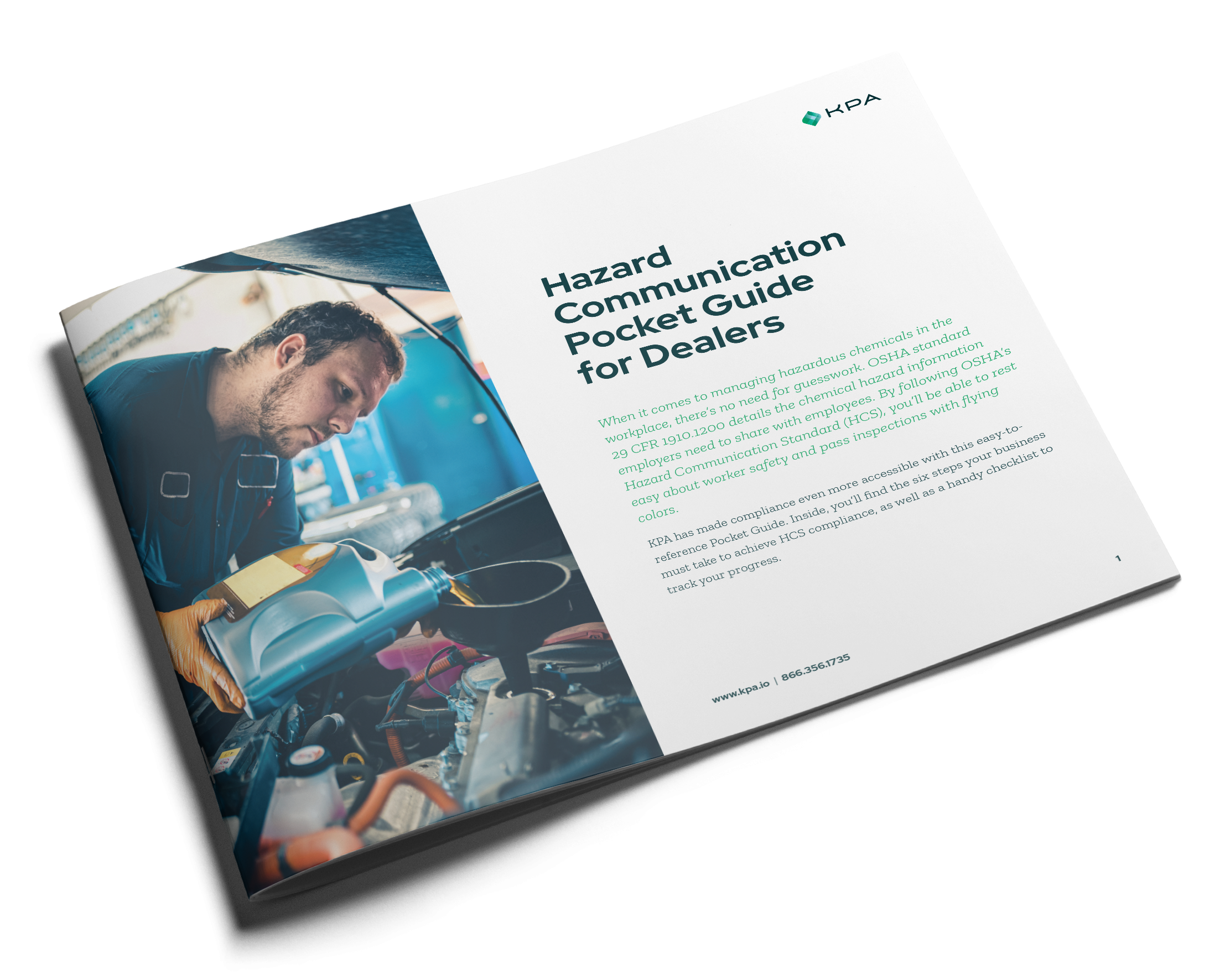After completing your initial assessments and understanding what regulations apply to your facility, it’s time to put those findings into action. This is where written programs and policies come into play – and they’re more than just paperwork.
I’ve spent 18 years in EHS, and one of the most common mistakes I see is companies downloading generic templates from the internet, filing them away, and thinking “Great, we have a safety program now!” But that’s not how it works. A real safety program needs to be specific to your facility and something your employees can actually implement.
Let’s Start with the “Big Three”
When dealers ask me where to begin with written programs, I always recommend starting with what I call the “Big Three” – these are fundamental programs that nearly every facility needs:

In this pocket guide, we have broken down Hazard Communications into 6 easy steps for you.
Building Beyond the Basics
Once you have these foundational programs in place, go back to your initial assessment findings. Do you have forklifts? You’ll need a forklift safety program. Are employees using respirators? That requires a respiratory protection program. Any unique process in your facility should have its own written procedure to ensure employees understand exactly how to perform their tasks safely.
Making It Work in Real Life
Here’s what separates effective programs from paperwork: They need to be something your employees can actually understand and implement. I’ve been in too many situations where beautifully written programs sit in binders while employees are left guessing about proper procedures. Your written programs should eliminate these information gaps and give everyone a clear plan to follow, especially when something goes wrong.
The key is creating facility-specific documentation that reflects your actual operations. Don’t just copy and paste from templates – think about how these procedures will work in your specific environment. Can employees actually follow the evacuation route you’ve mapped out? Do they know where to find safety information when they need it? If your emergency plan has designated a small breakroom as an inclement weather shelter, can all employees actually fit comfortably in that space? These are the questions that turn written programs into real workplace safety practices.
Remember, written programs and policies aren’t about checking boxes for compliance – they’re about creating a framework that keeps your employees safe and your facility running smoothly. Take the time to develop programs that work for your specific situation, and you’ll build a stronger safety culture in the process.
Complete Dealership Compliance from KPA
Keep your dealership safe from environmental factors that impact your workers’ and customers’ safety. KPA helps auto dealers maintain cultures of safety, streamline operations, and manage risk through a robust set of tools that includes a combination of consulting, training, and regulatory content.
Next Week, Let’s Look at Chemical Inventories
Join us as we break down the essential steps every dealership must take to build and maintain a successful safety program. If you haven’t already, subscribe to our blog for weekly installments of the 10 steps to complete compliance.
Follow a 10-step journey to compliance.
Move your mouse over each step to learn more about each step.
Related Content
Explore more comprehensive articles, specialized guides, and insightful interviews selected, offering fresh insights, data-driven analysis, and expert perspectives.
